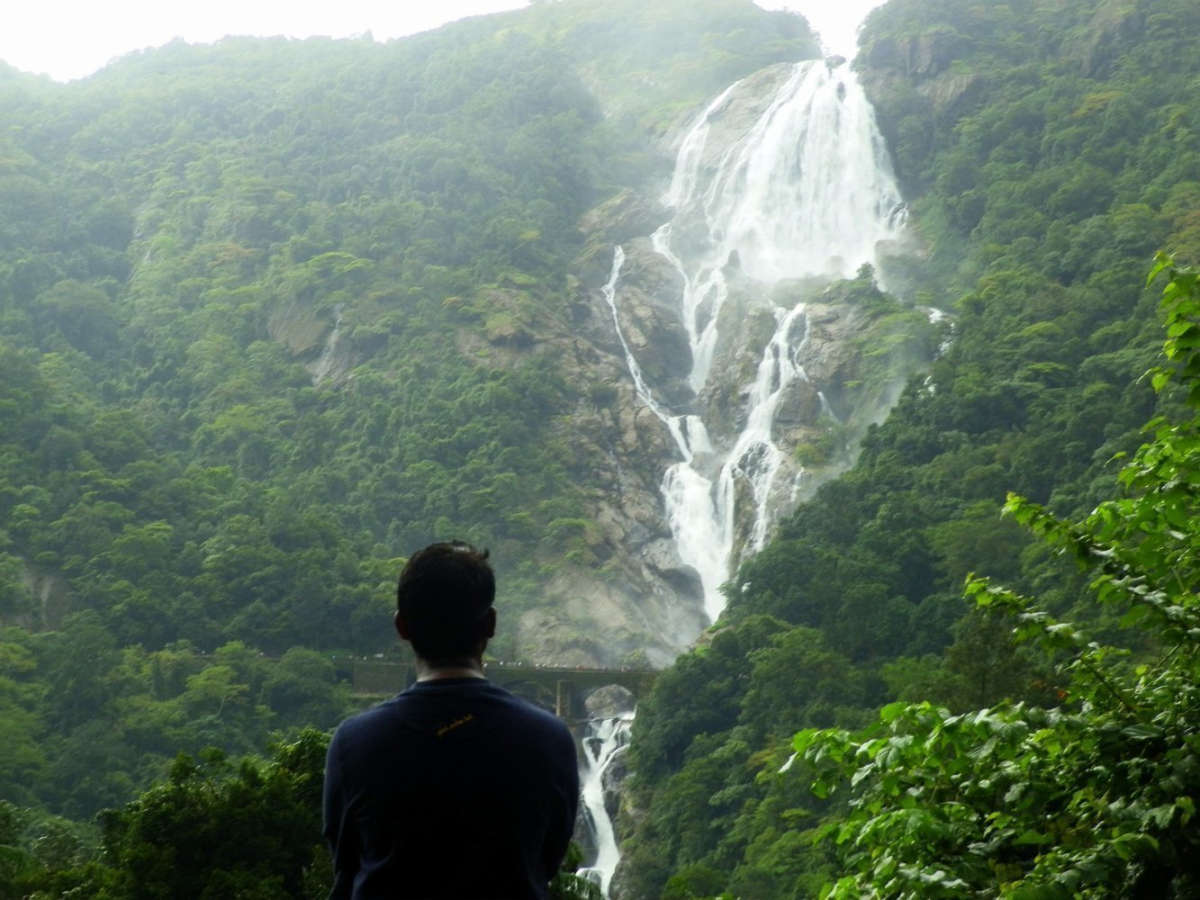Trek to Dudhsagar: Adventure Awaits Beyond the Tracks


Hidden amidst the dense forests of the Western Ghats, the Dudhsagar Waterfall stands as a magnificent spectacle that captivates every adventurer’s heart. Cascading from a height of over 300 meters, Dudhsagar — meaning "Sea of Milk" — is not just a visual delight but a gateway to one of India’s most thrilling trekking experiences. Nestled on the border of Goa and Karnataka, this waterfall is best accessed through an exhilarating journey on foot, cutting through railway tracks, dense forests, and rivulets. Let’s delve into what makes the Dudhsagar trek a truly unforgettable expedition.
A Glimpse into the Dudhsagar Waterfall
Located in the Bhagwan Mahaveer Sanctuary and Mollem National Park, Dudhsagar is a four-tiered waterfall that becomes a gushing torrent during the monsoon. It is part of the Mandovi River and is considered one of the tallest waterfalls in India. The striking imagery of the waterfall framed by an old railway bridge has made it a favorite among photographers and nature lovers alike.
Unlike other popular waterfalls, Dudhsagar is not easily accessible by road during the rainy season. This makes the trekking route to the falls all the more appealing to thrill-seekers and solitude lovers who crave the path less taken.
Choosing Your Trekking Route: Options for Every Kind of Adventurer
There are primarily three ways to undertake the Dudhsagar trek:
1. Castle Rock to Dudhsagar
This is the most sought-after trekking route. Starting at Castle Rock station in Karnataka, the trek spans around 14 kilometers and follows the railway tracks deep into the forest. Trekkers will pass through several tunnels and over narrow bridges, giving the experience a rustic charm. This route is relatively moderate in difficulty and ideal for first-time trekkers with decent fitness levels.
2. Kulem to Dudhsagar
Beginning at Kulem station in Goa, this route offers a 12-kilometer trek that winds through thick tropical forest. It's slightly more challenging due to the dense vegetation and multiple stream crossings. This trail is perfect for those looking for an immersive jungle experience.
3. Carambolim to Sonaulim
A less conventional route, this one is recommended for experienced trekkers looking for solitude and a tougher challenge. The terrain is uneven, and navigation can be tricky, so it’s best undertaken with a local guide.
When to Visit: Timing Is Everything
The best time to trek to Dudhsagar is during the monsoon (July to September) and the post-monsoon season (October to December). During the monsoon, the waterfall is at its peak glory, but trails can be slippery and visibility is low. Post-monsoon offers a safer trek with clear views, lush surroundings, and a roaring but more manageable waterfall.
Avoid trekking during the dry months (January to May), as the flow of the waterfall diminishes and the trail loses much of its vibrancy.
Essential Tips for a Safe and Enjoyable Trek
Wear proper trekking shoes with good grip, especially during the monsoon when the terrain is wet and muddy.
Carry rain protection, including ponchos and waterproof bags for electronics.
Avoid using headphones during the trek, especially near tunnels and bridges where trains pass.
Stay hydrated and carry enough water, as natural sources may be unreliable or unsafe to drink.
Pack light but wisely — include essentials like snacks, a flashlight, mosquito repellent, and a basic first-aid kit.
Travel in groups or hire local guides for safety and to avoid getting lost.
Wildlife and Environmental Considerations
The area around Dudhsagar is rich in biodiversity. Trekking through this region may offer sightings of monkeys, langurs, deer, and a variety of birds. However, trekkers should maintain a respectful distance from wildlife and avoid littering the forest.
The region falls under a protected zone, so it’s essential to follow local guidelines and regulations. In recent years, the Forest Department has restricted unsupervised access to reduce environmental degradation and ensure visitor safety. Always check for the latest permissions and travel advisories before planning your trip.
Is the Dudhsagar Trek for You?
The trek is best suited for those who are comfortable walking long distances and navigating uneven terrain. You don’t need to be an expert mountaineer, but a basic level of fitness helps. The trail is particularly appealing to solo travelers, photographers, adventure groups, and even families with teenagers looking to unplug from the digital world.
If you're someone who enjoys the raw beauty of nature, the sound of a distant train whistle echoing through valleys, and the thrill of crossing slippery trails under a canopy of monsoon-drenched trees, this trek is for you.
How to Reach the Starting Points
Castle Rock Station is accessible via trains from Hubli, Londa, or Belgaum. From there, the trek begins directly along the railway.
Kulem Station is reachable by train from Madgaon, a major railway junction in South Goa.
Road Access: You can also hire a cab or drive to either Castle Rock or Kulem. However, during monsoon, vehicular access is restricted, so confirm local conditions beforehand.
Responsible Trekking: Leave No Trace
The popularity of Dudhsagar has brought with it concerns about environmental damage and waste accumulation. Trekkers should take utmost care not to leave behind plastic wrappers, bottles, or any other non-biodegradable waste. Carry a garbage bag and bring all your trash back with you. Respect the local flora and fauna, and avoid making noise or disturbing wildlife.
Final Thoughts
The Dudhsagar trek is more than just a journey to a waterfall — it’s a voyage into the heart of India’s wilderness, blending elements of thrill, natural beauty, and rustic charm. Whether you're walking beside ancient railway lines, ducking into echoing tunnels, or emerging to the breathtaking view of water thundering down rock faces, each moment brings you closer to nature and yourself.
Leave a comment